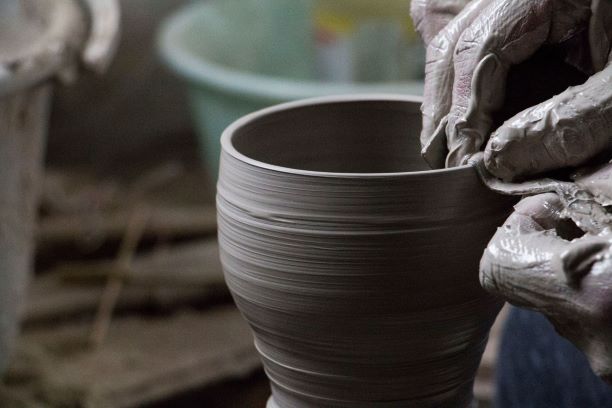
The items currently used as Japanese tableware are roughly divided into three categories in order of origin: stoneware, ceramics, and porcelain.
stoneware
Stoneware is a type of pottery that dates back to when kilns were made.
Basically, it is not glazed, but because the fabric is not water permeable and the firing temperature is high at 1,100 to 1,200 degrees, it is baked hard and does not leak water.
After shaping, it is dried and then fired without bisque firing or glazing.
Typical production areas include Bizen, Tokoname, Banko, Iga, and Shigaraki.
pottery
Pottery is called earthenware.
A water-repellent viscosity is used, and the dough is bisque fired, underglazed, and glazed in that order, and then fired at 1200 to 1300 degrees.
Oribe, Shino, Karatsu, Satsuma, Hagi, and Mashiko are well known. One of the highlights of pottery is the cracks called intrusions that occur due to the difference in shrinkage rates between the fabric and glaze.
porcelain
The last to appear was porcelain. In Japan, it began in the first half of the 17th century when Korean potter Yi Sam-pyeong discovered raw materials for porcelain in Arita.
Porcelain is made from china clay, which contains almost no metal, and is the hardest of all pottery items, with no water absorption.
It is fired at a high temperature of 1,300 to 1,400 degrees, and has characteristics such as being thinner than porcelain, having a white texture, and making a metallic sound when tapped.
Famous areas include Arita, Shimizu, Kutani, and Tobe.

